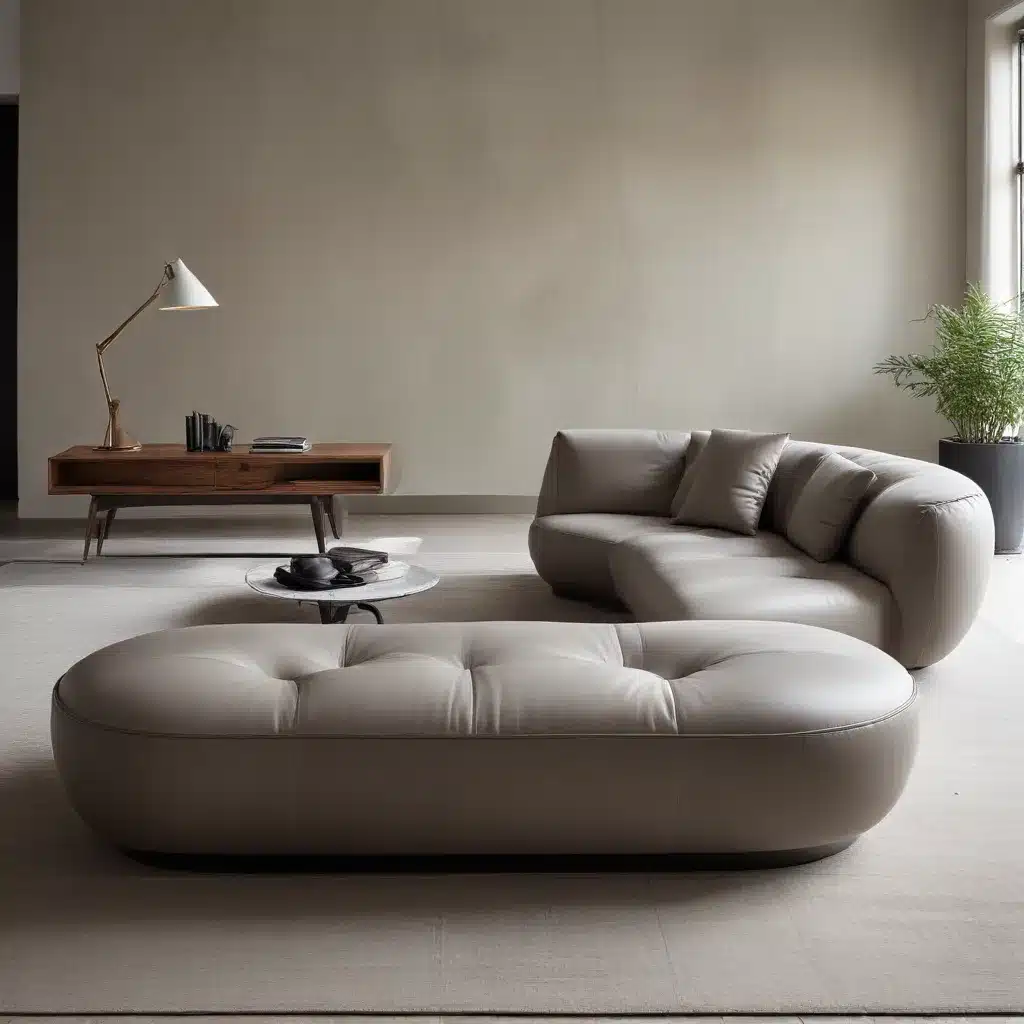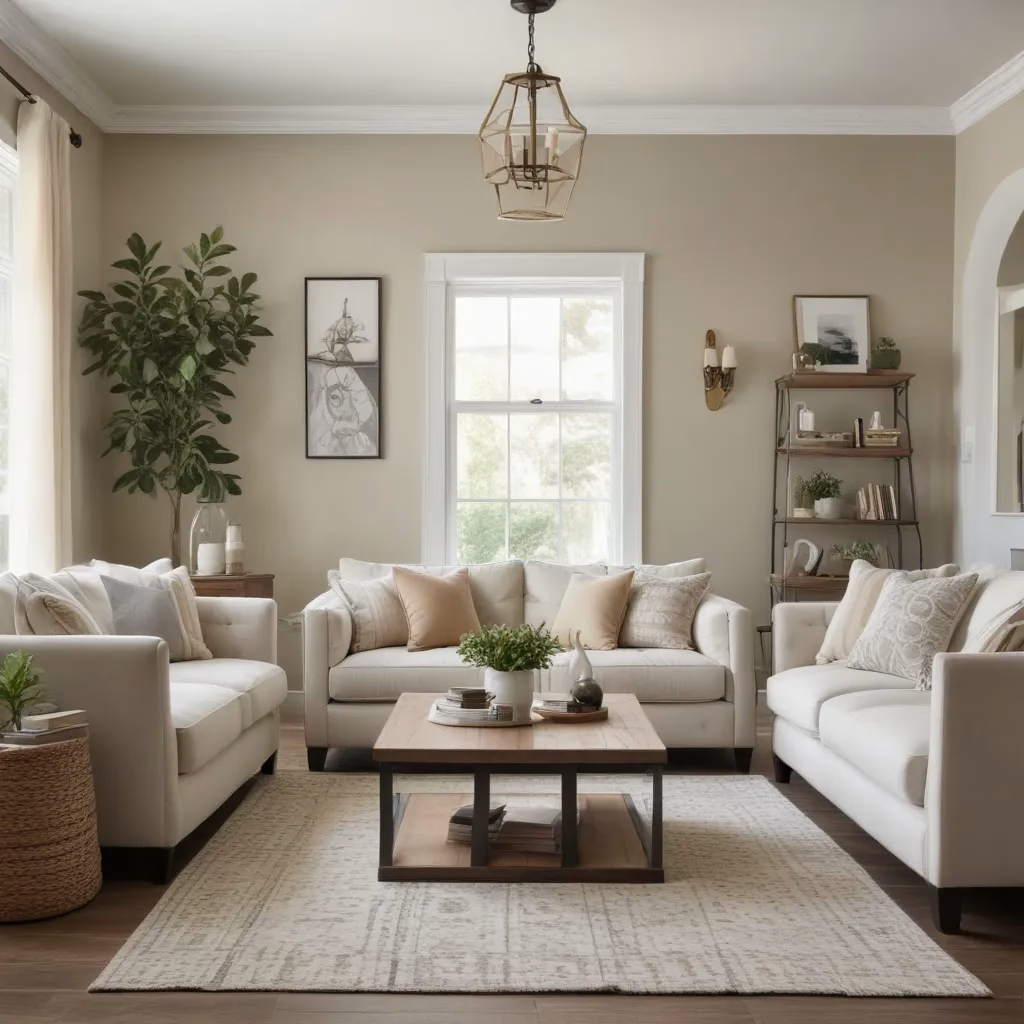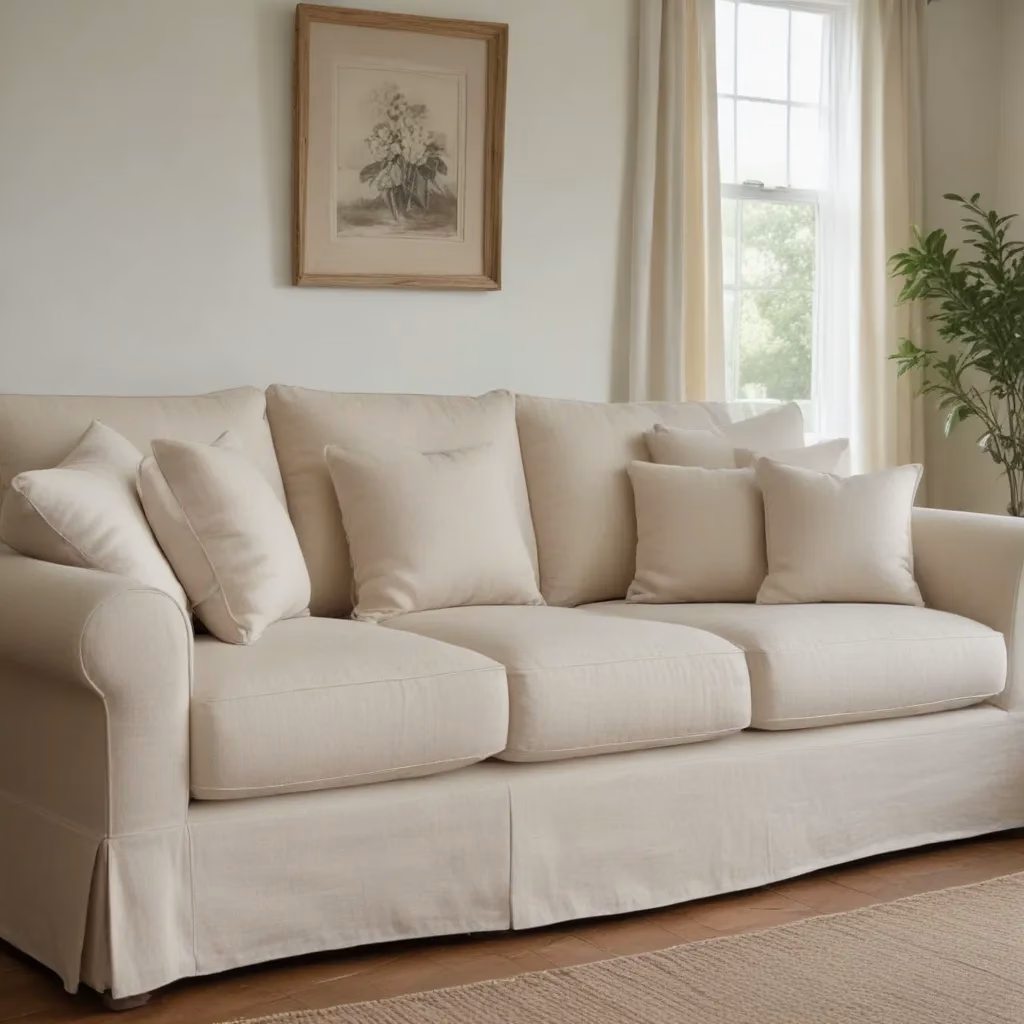
The Rise of Artistic Seating
As a furniture specialist with years of experience in the industry, I’ve witnessed countless trends come and go. However, the current wave of sculptural sofas is unlike anything I’ve seen before. These pieces are redefining what we expect from our living room centerpieces, blending form and function in ways that challenge our perceptions of comfort and style.
When I first encountered a truly sculptural sofa at a design show in Milan, I was struck by its bold lines and unconventional shape. It looked more like a modern art installation than a place to relax after a long day. But as I approached and took a seat, I was pleasantly surprised by its comfort. This experience opened my eyes to the possibilities of what a sofa could be.
Sculptural sofas are not just about looks; they’re about creating a statement in your living space. They serve as conversation starters, focal points, and functional art pieces all at once. As I’ve incorporated these designs into various projects, I’ve seen how they can transform a room from ordinary to extraordinary with their presence alone.
Balancing Aesthetics and Comfort
One of the biggest challenges in designing sculptural sofas is striking the right balance between visual appeal and comfort. As someone who has spent countless hours testing and evaluating furniture, I can attest that this is no easy feat. The key lies in understanding the human body and how it interacts with different shapes and materials.
In my experience, the most successful sculptural sofas use innovative materials and construction techniques to create ergonomic support within their artistic forms. For example, I once worked with a designer who used memory foam molded into undulating curves to create a sofa that looked like a rolling landscape but felt like a dream to sit on.
Another important aspect is the use of texture. Sculptural sofas often feature unique upholstery choices that complement their shapes. I’ve seen everything from buttery soft leathers that mold to the body to technical fabrics that add visual interest while remaining durable and comfortable.
Integrating Sculptural Sofas into Your Space
When clients ask me how to incorporate a sculptural sofa into their existing decor, I always start by considering the overall design aesthetic of the space. These statement pieces work best when they have room to breathe, so I often recommend rearranging the layout to give the sofa a prominent position.
Color plays a crucial role in integration. While many sculptural sofas come in bold hues, I’ve found that neutral tones can be just as impactful. A cream-colored sculptural piece against a dark wall creates a stunning contrast that highlights the sofa’s unique form.
Accessories are another way to tie a sculptural sofa into your space. I love using throw pillows and blankets to add pops of color or texture that complement the sofa’s design. However, it’s important not to overdo it – the goal is to enhance, not overshadow, the sofa’s sculptural qualities.
The Influence of Technology on Sofa Design
As technology continues to advance, it’s having a profound impact on sofa design, particularly in the realm of sculptural pieces. I’ve been fortunate enough to work with some cutting-edge manufacturers who are pushing the boundaries of what’s possible.
3D printing, for instance, has opened up new avenues for creating complex shapes that were previously impossible or prohibitively expensive to produce. I recently visited a factory where they were using large-scale 3D printers to create sofa frames with intricate, organic structures that mimicked natural forms.
Smart technology is also making its way into sculptural sofas. I’ve seen designs that incorporate hidden charging ports, built-in speakers, and even adjustable lumbar support controlled by smartphone apps. These features add functionality without compromising the sofa’s artistic integrity.
Sustainability in Sculptural Sofa Production
As the furniture industry moves towards more sustainable practices, sculptural sofas are at the forefront of this change. Many designers I work with are now prioritizing eco-friendly materials and production methods in their creations.
One particularly innovative approach I’ve encountered involves using recycled plastics to create the underlying structure of sculptural sofas. These materials are molded into organic shapes that would be difficult to achieve with traditional materials, and then covered with sustainable upholstery options like organic cotton or recycled polyester.
Another trend I’m excited about is the use of biodegradable foams and fillings. These materials provide the same level of comfort as traditional options but break down naturally at the end of the sofa’s life cycle, reducing its environmental impact.
The Future of Sofa Design
As I look to the future of sofa design, I see the lines between furniture and art blurring even further. Collaborations between furniture designers and sculptors are becoming more common, resulting in pieces that truly push the boundaries of what we consider a sofa to be.
I recently attended a workshop where designers were experimenting with shape-shifting materials that allow sofas to change form based on the user’s preferences or the time of day. While still in the experimental stages, this technology has the potential to revolutionize how we interact with our furniture.
Another exciting development is the use of augmented reality in sofa design. Some companies are now offering apps that allow customers to visualize sculptural sofas in their own spaces before making a purchase. As someone who has spent years helping clients choose the right pieces for their homes, I can’t overstate how valuable this tool can be.
Caring for Your Sculptural Sofa
Owning a sculptural sofa is a bit like owning a piece of art, and it requires special care to maintain its beauty and functionality. Over the years, I’ve developed a set of best practices for keeping these unique pieces in top condition.
First and foremost, regular cleaning is essential. The unconventional shapes of sculptural sofas can create nooks and crannies where dust and debris accumulate. I recommend using a soft brush attachment on your vacuum cleaner to gently remove dirt without damaging the upholstery.
For fabric-covered sculptural sofas, spot-cleaning is often the safest option. I always advise clients to test any cleaning solution on a hidden area first to ensure it won’t affect the color or texture of the fabric.
Leather sculptural sofas require a different approach. A slightly damp cloth is usually sufficient for regular cleaning, followed by a leather conditioner to keep the material supple and prevent cracking.
The Investment Value of Sculptural Sofas
When clients ask me about the investment potential of sculptural sofas, I’m always quick to point out that these pieces are more than just furniture – they’re collectible design objects. Many sculptural sofas are produced in limited editions or as one-off pieces, which can significantly increase their value over time.
I’ve seen firsthand how certain sculptural sofas have appreciated in value. For example, a client of mine purchased a limited edition piece by a renowned designer ten years ago. Recently, a similar sofa from the same collection sold at auction for three times its original price.
However, it’s important to note that not all sculptural sofas will increase in value. Factors like the designer’s reputation, the piece’s provenance, and its condition all play a role. My advice is always to choose a sofa that you love and that enhances your living space – any potential increase in value should be seen as a bonus.
Choosing the Right Sculptural Sofa for Your Space
Selecting the perfect sculptural sofa for your home can be a daunting task, but it’s one that I find incredibly rewarding. Here are some key considerations I always discuss with my clients:
-
Scale: Sculptural sofas often have unconventional proportions, so it’s crucial to measure your space carefully. I once worked with a client who fell in love with a massive, undulating sofa, only to realize it wouldn’t fit through their front door!
-
Functionality: While aesthetics are important, don’t forget that a sofa is meant to be sat on. Consider how you’ll use the piece in your daily life. Will it be the main seating in your living room, or more of an accent piece?
-
Material: The upholstery you choose can dramatically affect both the look and feel of your sculptural sofa. Leather can add a sleek, modern touch, while textured fabrics can soften bold shapes.
-
Color: A sculptural sofa is already a statement piece, so consider whether you want it to blend in with your existing decor or stand out as a focal point.
-
Maintenance: Some sculptural designs can be more challenging to clean and maintain than traditional sofas. Be sure you’re prepared for any special care requirements.
Remember, choosing a sculptural sofa is a personal decision. What works for one space may not work for another. That’s why I always encourage my clients to take their time, consider multiple options, and even sit on the sofa for an extended period if possible before making a decision.
The Role of Lighting in Showcasing Sculptural Sofas
One aspect of displaying sculptural sofas that often gets overlooked is lighting. In my experience, the right lighting can make all the difference in how a sculptural sofa is perceived in a space.
I once worked on a project where we installed adjustable track lighting above a particularly dramatic sculptural sofa. This allowed us to highlight different aspects of the piece throughout the day, creating an ever-changing visual experience.
For more subtle effects, I’m a fan of using floor lamps with directional shades. These can be positioned to cast interesting shadows that enhance the sofa’s sculptural qualities.
Natural light also plays a crucial role. When placing a sculptural sofa, I always consider how the changing daylight will interact with its form. A piece that looks stunning in the morning light might lose some of its impact as the sun moves across the sky.
The Psychology of Sculptural Seating
As I’ve worked with clients over the years, I’ve become fascinated by the psychological impact of sculptural sofas. These pieces do more than just provide a place to sit – they can actually influence our mood and behavior in a space.
I’ve noticed that sculptural sofas often encourage more dynamic social interactions. Their unconventional shapes seem to inspire people to sit in different ways, leading to more engaging conversations and a more relaxed atmosphere.
On the other hand, some sculptural designs can create a sense of intrigue or even slight discomfort, which can be desirable in certain contexts. I once installed a particularly avant-garde piece in a corporate waiting area – it became a talking point that helped break the ice between strangers sharing the space.
Customization: Making Your Sculptural Sofa Unique
One of the most exciting trends I’ve seen in recent years is the move towards customizable sculptural sofas. Many manufacturers now offer options to tailor these pieces to individual tastes and needs.
I recently worked with a client who wanted a sculptural sofa that reflected their passion for abstract art. We collaborated with a designer to create a modular piece that could be rearranged into different configurations, almost like a three-dimensional puzzle.
Another interesting customization option is the ability to choose different materials for different parts of the sofa. For example, combining a sleek metal frame with soft, organic upholstery can create a fascinating juxtaposition of textures.
The Global Influence on Sculptural Sofa Design
As someone who regularly attends international furniture fairs, I’ve had the privilege of seeing how different cultures influence sculptural sofa design. It’s fascinating to see how designers from various parts of the world interpret this trend.
In Scandinavian design, for instance, I’ve noticed a tendency towards softer, more organic forms that blend sculptural elements with traditional Nordic aesthetics. These pieces often feature muted colors and natural materials like wool and wood.
Italian designers, on the other hand, tend to embrace bold, dramatic shapes and vibrant colors in their sculptural sofas. I once saw a piece at the Milan Furniture Fair that looked like a giant, abstract flower in bright red leather – it was a true showstopper.
Japanese influence can be seen in sculptural sofas that emphasize simplicity and negative space. These designs often feature clean lines and minimal ornamentation, allowing the form itself to take center stage.
The Role of Sculptural Sofas in Open Plan Living
As open plan living continues to be popular, I’ve found that sculptural sofas can play a crucial role in defining spaces within larger areas. Their unique shapes can act as natural room dividers, creating distinct zones without the need for walls.
I recently worked on a project where we used a large, curved sculptural sofa to separate the living area from the dining space in a loft apartment. The sofa’s sweeping form not only provided ample seating but also created a visual barrier that helped define each area.
Another benefit of using sculptural sofas in open plan spaces is their ability to add visual interest from multiple angles. Unlike traditional sofas that are often placed against a wall, sculptural pieces can be appreciated from all sides, making them ideal for central positions in large, open rooms.
The Artisanal Aspect of Sculptural Sofa Production
While technology plays a significant role in the creation of sculptural sofas, there’s still a strong artisanal element to their production that I find particularly fascinating. Many of these pieces require skilled craftspeople to bring the designer’s vision to life.
I once had the opportunity to visit a workshop where sculptural sofas were being made. The level of skill and attention to detail was impressive. From the precise cutting and shaping of the frame to the careful upholstering of complex curves, every step required a high degree of expertise.
This blend of traditional craftsmanship and innovative design is what sets sculptural sofas apart. It’s not just about creating a functional piece of furniture, but about producing a work of art that people can interact with daily.
The Impact of Sculptural Sofas on Interior Design Philosophy
As I reflect on the rise of sculptural sofas, I can’t help but consider how they’ve influenced broader trends in interior design. These pieces have challenged our assumptions about what furniture should look like and how it should function.
In my practice, I’ve noticed a shift towards more eclectic, personalized interiors as a result of the sculptural sofa trend. Clients are more willing to take risks with unconventional pieces, mixing different styles and periods to create truly unique spaces.
Sculptural sofas have also encouraged a more holistic approach to room design. Rather than treating furniture as separate elements to be arranged in a space, designers are now considering how each piece contributes to the overall composition of a room.
Conclusion: The Enduring Appeal of Sculptural Sofas
As we look to the future of interior design, it’s clear that sculptural sofas will continue to play a significant role. Their ability to blend art, function, and comfort makes them uniquely suited to our evolving lifestyles and aesthetic preferences.
Whether you’re a design enthusiast or simply looking to add a statement piece to your home, a sculptural sofa offers an opportunity to engage with your living space in a new and exciting way. As someone who has spent years working with these remarkable pieces, I can attest to their transformative power.
If you’re considering adding a sculptural sofa to your home, I encourage you to explore the wide range of options available. From subtle, organic forms to bold, avant-garde designs, there’s a sculptural sofa out there to suit every taste and space.
For more inspiration and expert advice on choosing the perfect sofa for your home, whether sculptural or traditional, be sure to visit Sofa Spectacular. Their curated selection and knowledgeable staff can help you find a piece that not only meets your functional needs but also elevates your living space to new heights of style and sophistication.



